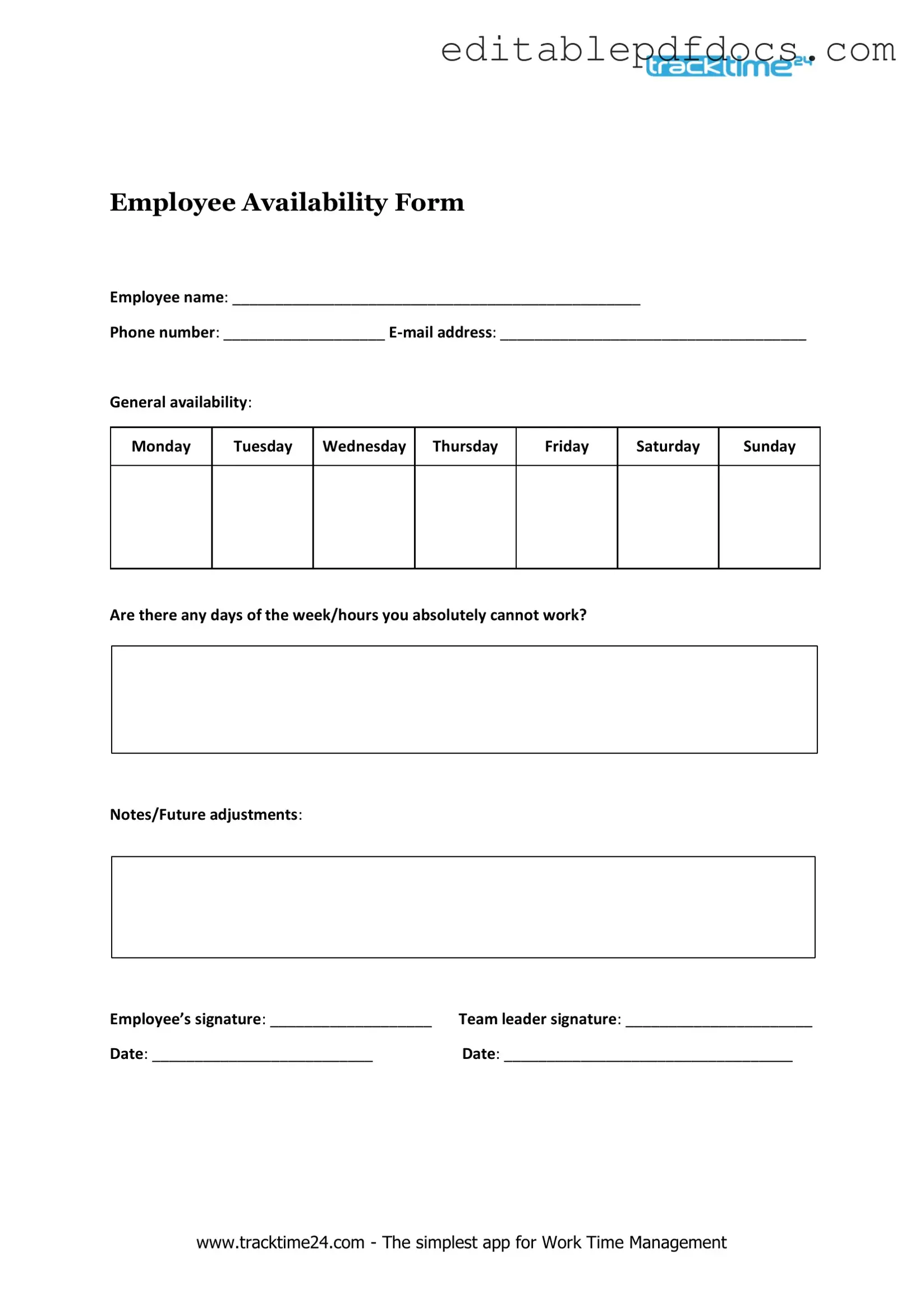Filling out an Employee Availability form can seem straightforward, but many individuals make common mistakes that can lead to confusion or scheduling issues. One frequent error is not providing complete information. When a person skips sections or leaves fields blank, it creates uncertainty for the employer. They may not know when the employee is available to work, which can complicate scheduling.
Another common mistake is failing to update the form when circumstances change. Life is dynamic, and availability can shift due to personal commitments or changes in other jobs. If an employee neglects to inform their employer of these changes, it can lead to scheduling conflicts and frustration on both sides.
Some individuals also underestimate the importance of clarity in their responses. Writing in vague terms, such as "available most evenings," does not provide the specific information employers need. Instead, it is better to clearly state exact days and times when available. This clarity helps employers create a more efficient schedule.
In addition, people often forget to check for errors before submitting the form. Simple typos or miswritten days can lead to misunderstandings. Taking a moment to review the form can prevent unnecessary complications later on.
Another mistake is not considering all commitments when filling out the form. Some individuals may only think about their main job, overlooking other responsibilities like school or family obligations. This oversight can result in overcommitting and ultimately lead to stress or burnout.
Additionally, failing to communicate any special needs or preferences can be a significant oversight. If an employee has specific requirements, such as needing to leave by a certain time or preferring to work specific shifts, it’s important to include that information. This helps employers accommodate their staff better.
Lastly, some employees may not take the form seriously, treating it as a mere formality. However, this form plays a crucial role in scheduling and can impact the entire team. Understanding its importance can encourage individuals to fill it out thoughtfully and accurately.
